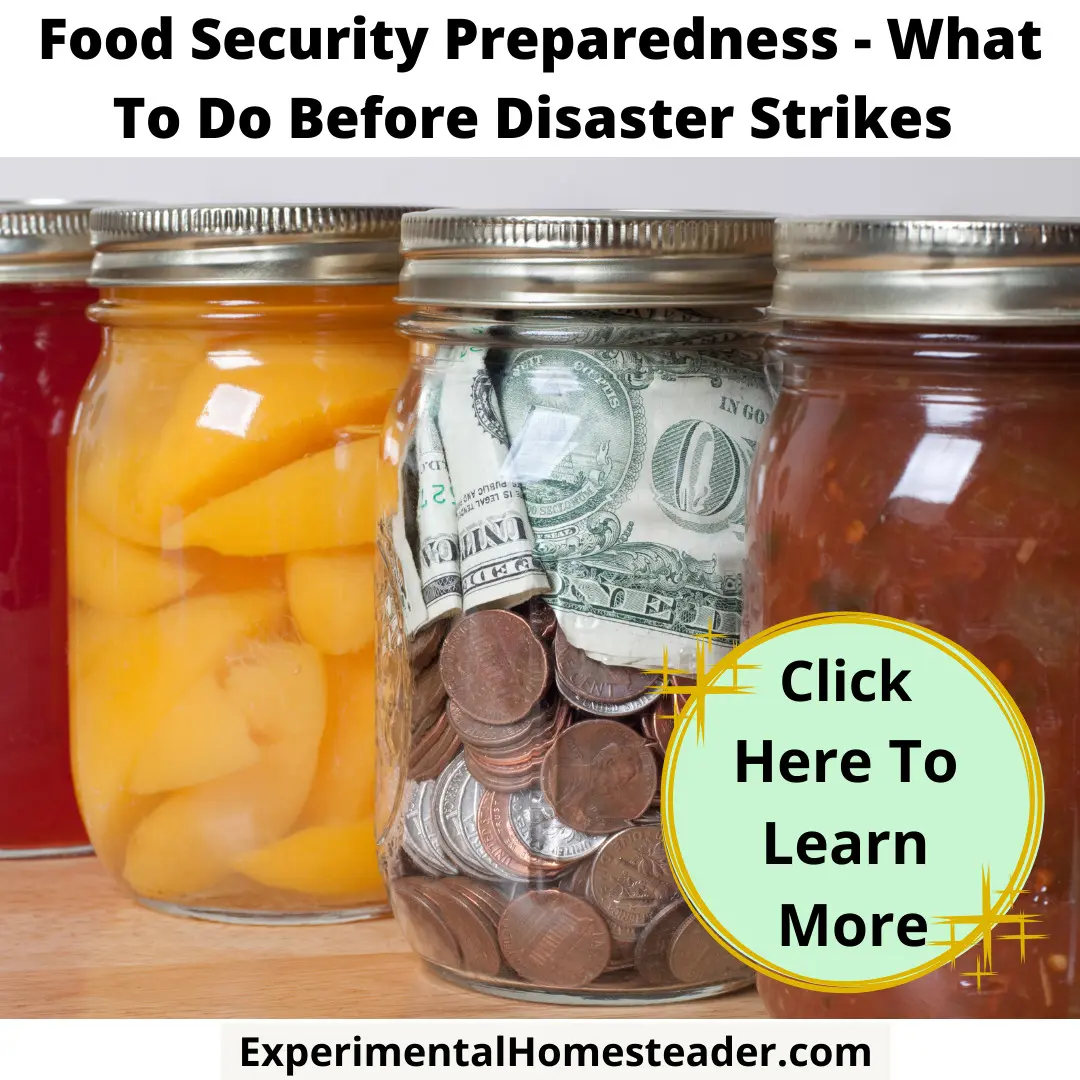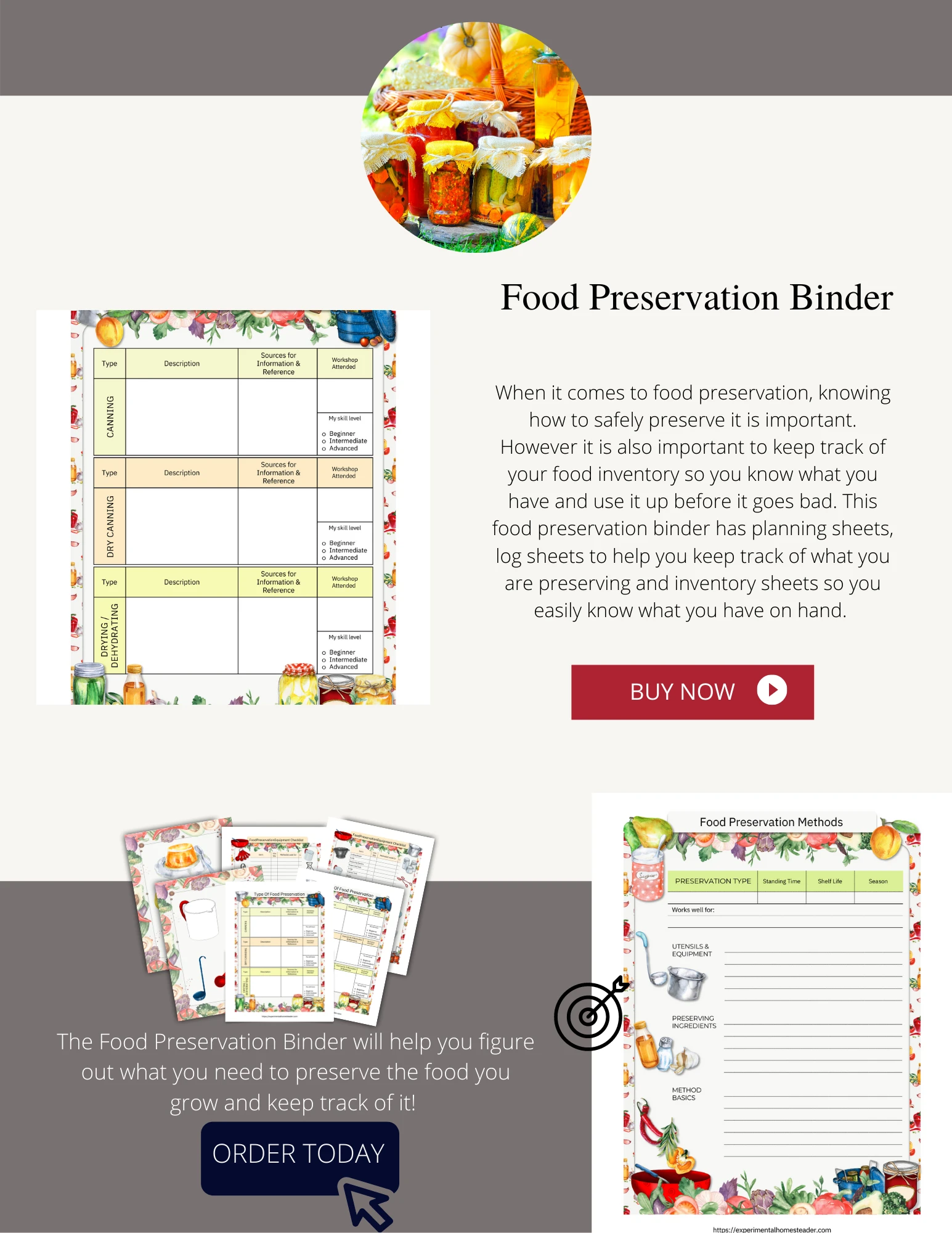Food security preparedness is one of the best things you can do for your family.
Food security preparedness is one of the best things you can do for your family.
It can help you save money, eat healthier, and be better prepared for emergencies.
Food insecurity is a serious issue in the United States these days.
A lot of people don't realize how vulnerable they are to food insecurity until it starts to happen to them or their families - it's shocking how quickly some people go from having enough food on hand to not even being able to feed themselves or their kids anymore.
Preparing for food insecurity can seem like an intimidating task, but it doesn't have to be!
There are so many different ways that people can improve their food security with just a few simple changes.
These include altering their diet to more sustainable foods or just by simply freezing more healthy portions of food and stocking up on canned goods and other non-perishable items.
Why Food Security Preparedness Is Important
When extreme weather events like hurricanes, floods, or drought occur, food security can become an issue.
Natural disasters as well as human-made disasters can leave us in a state of panic which can quickly lead to chaos and violence.
Many people do not have more than a few days food on hand at best, most of it stored in a refrigerator or freezer without a back-up power source.
Many people do not know how to preserve food so they are left with one of two choices in this event – eat it or toss it.
Many people do not even know how to cook without a stove.
Learn what skills you will need to survive any natural or human-made disaster, including how to grow and preserve your own survival food kits.
Start With An Emergency Preparedness Plan
The first step is to put together an emergency preparedness plan.
Once the plan is in place, follow through with it.
Here are some things to learn now before you need to!
Grow A Garden
Learn how to grow fruits, vegetables and herbs.
Learn how to identify them in the wild as well.
Remember that many plants look similar but one can be poisonous while the other is edible, so if in doubt, do not eat something from the wild.
If possible, learn to garden year round.
You can grow many vegetables indoors under grow lights or even outdoors in a cold frame.
Try growing tomatoes, peppers, eggplants and other warm weather crops under grow lights and plant lettuce, kale, Brussels sprouts, spinach and carrots outdoors under cold frames.
While it is true, if a major disaster struck you may lose the crops, you will at least know how to start over with new crops.
In the meantime the crops you grow will save you money.
Learn To Preserve Food
Learn how to can or dehydrate food.
There are other methods of food preservation but these two are the most common ones.
Dehydrated food can be stored in a freezer to keep pests out.
You can also store it in metal cans so if there was an earthquake or similar disaster, the cans with the food in them would not break.
Feel free to seal the cans or at least the food in the cans in freezer bags to further secure the food from being lost in the cans should come open.
If you can, think of ways to keep your cans from breaking.
For example, store the cans in sealed boxes such as plastic tubes or wooden crates that can be set on the floor.
Wrap the sides of each jar with a thick layer of newspaper or cloth.
While this may seem a bit extreme, it should keep the jars from breaking.
Be sure all the food you preserve are properly labeled, dated and sealed.
When canning food, if you do not have enough jars of food to fill the canner, fill some jars with clean, filtered water or distilled water and can them too.
This will help you build up a supply of clean, uncontaminated water for emergency use.
Fresh Meat Sources
Learn how to fish and hunt now.
These are valuable skills that may come in handy.
Get a gun and learn how to use it safely.
Buy a butchering knife set and learn how to butcher meat.
Buy a good book on the subject of butchering and preparing fresh meat and keep it handy.
Remember if there is no electricity the only way you will have to preserve meat is through canning or natural storage methods such as curing.
Keep the books in your disaster preparedness kit so you know where they are if you need them.
Survival Preparedness Kits
Put together a disaster preparedness kit.
One that you can take with you on the run, one for your home and one for each vehicle you may take.
Stock up on things such as kerosene, gas, wood, oil lamps, lamp oil, matches, an axe, food for your family or livestock and medical supplies.
Don’t forget extra blankets and at least one change of clothes.
Start stockpiling everyday needs such as toilet paper, detergents, soaps and shampoos.
Think about the things you use everyday and begin to purchase extra.
If you have a still, put this with your emergency supplies.
You will be able to use this to purify water if you need to!
Emergency Medical Supplies
A first aid kit is great, but what happens when your kit runs out?
Stock up on extra items such as band-aids and anti-biotic cream.
Get a good book on herbal medicine.
Learn the herbs to use and how to use them.
You may want to start making tinctures and salves ahead of time.
Grow your own herbs for the purest product.
Do not spray them, grow them organically.
By thinking ahead, storing enough food for at least a year – two if possible – you will find yourself ready for whatever emergency situation comes your way.
Final Preparedness Tips
Remember when storing supplies to put the oldest to the front and continue rotating, so the newer items are always in the rear.
Finally, make sure your home is secure and a safe haven in the event of a disaster.
Have pre-cut wood on hand in the event you need to board up windows and doors, install a wood burning stove and learn how to use it including how to cook on it.
Preparation and knowledge can lead you through any disaster.
The more you know, the more prepared you are, the less likely you are to be caught off guard.
Self-Sufficient Living
Explore the ultimate guide to self-sufficient living with our curated list of related blog posts. From food preservation to DIY projects and homesteading inspiration, find everything you need to thrive on your self-sufficiency journey. Perfect for beginners and seasoned homesteaders alike!
The Essential Guide To A Completely Self Sufficient Homestead
Learn how to start living on a completely self sufficient homestead today with this essential guide plus sign up for our FREE eCourse!
How To Be Self-Sufficient In An Apartment
Learn how to be self-sufficient in an apartment. Even if you live in a big city you can learn skills you will use one day on your homestead.
Thriving Through Self-Sufficiency: A Journey to a Balanced Life
Learn how to thrive through self-sufficiency: slow down, live intentionally, and find balance for a healthier and more sustainable lifestyle.
Top 5 Tips for Balancing the Self-Sufficient Lifestyle: Stay Organized, Motivated, and Successful
Discover how to balance the self-sufficient lifestyle with actionable tips for organization, motivation, and sustainable success.
Step-by-Step Guide to Self-Sufficient Living: One Small Step at a Time
Start small with this step-by-step guide to self-sufficient living. Simple, achievable tips to ease into a sustainable lifestyle.
7 Ways To Start On The Path To A Self Sustaining Homestead
A self sustaining homestead is a lot of work but you do get a lot of satisfaction knowing you are living the self sufficient life you've dreamed of.
A Beginner's Guide To A Self Sufficient Homestead Plan
Making a self sufficient homestead plan is the first step to accomplishing your goal of living on a self sufficient homestead.
Seasonal Foraging Guide for Homesteaders: Year-Round Wild Edibles
Enhance your homesteading skills with our comprehensive seasonal foraging guide. Learn how to find and enjoy nature's delicious offerings.
Living The Homestead Lifestyle
Embarking on the homestead lifestyle is not easy. This is why I love Homegrown and Handmade by Deborah Niemann. The homestead tips are great!
Weapons To Include In Your Homesteading Self Sufficiency Survival Kit
Learn what weapons - both lethal and non-lethal - to include in your homesteading self sufficiency survival kit. Also learn why you need to include them.
Mockmill Flour Grinding Mill Makes It Easy To Grind Your Own Grain
The Mockmill flour grinding mill quickly and easily turns wheat berries into flour that is perfect for making freshly baked bread.
Homesteading Today In The USA
Although the Homestead Act of 1862 is no longer in effect, free land is still available for those wanting to try their hand at homesteading today.
How Much Land For A Homestead
When it comes down to the reality of how much land for a homestead you really need, it's much more than just a number. Learn what you need to consider.
What Homestead Living Is Really Like
Learn what homesteading living is really like. It's not always picturesque or romantic. In fact, sometimes it is difficult.
Learn To Be Self-Sufficient
Learn to be self-sufficient from Sheri Ann Richerson, a modern day self-sufficient woman with these eBooks and printables!
Self Sustainable Living Ideas Using Animals
Animals are a great way to help you acheive your self sustainable living ideas. Learn what animals are best for your self sufficiency plan.
Preserving Herbs For Winter Use eCourse
Do you love fresh herbs but wonder if there is an easy way to preserve them for the winter?
Do you seek other ways to use herbs other than just as a seasoning on food?
There are so many ways to preserve herbs for winter use – from various methods of drying them to freezing them, but it doesn’t end there.
Some of the best ways to preserve herbs in right in the foods you would normally incorporate herbs into – pre-made seasonings, teas, butter or oil.
Then this is the course for you!
What You Will Learn In This Course:
Hang herbs to dry
Use a hanging herb dryer
Dry herbs on a window screen dryer
Dry herbs in a dehydrator
Dry herbs in an oven
Dry herbs in a microwave
Freeze herbs whole
Make herb ice cubes
Add fresh herbs to freezer meals
Add herbs to canned sauces
Preserve herbs in vinegar
Preserve herbs in oil
Preserve herbs in butter
Preserve herbs in salt or sugar
Make pre-made seasonings
Make herbal tea
Make herb jelly (plus tips on how to use these)



























